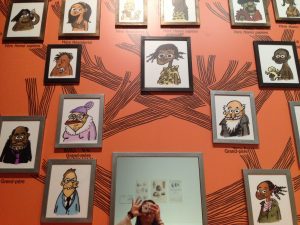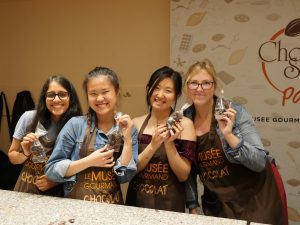This week we went to the Le Musée Gourmand Du Chocolat, where we not only toured the museum, but we also participated in a workshop where we learned (hands-on!) part of how chocolate is made. The museum was very thorough, beginning with how cocoa beans were used by indigenous Americans for making drinks and even trading as currency. What we learned about the purported health benefits of chocolate from the museum tied into what we learned in class about cocoa flavanols’ potential ability to sharpen our brains’ function. An article we discussed this week at length and wrote a review article on provided evidence that cocoa flavanols “enhance the efficiency of spatial attention” (Karabay, Saija, Field, & Akyürek 2018). Therefore, chocolate may not only be good for our taste buds, but also our brains!
The chocolate workshop was really interesting because the chef at the museum that ran our workshop taught us a lot about how different beans are selected for different flavors, how beans are prepared to make different kinds of chocolate, and how different fillings are added to create various chocolatey delights.

Continue reading “Chocolate: Good for the Brain, Good for the Soul”







